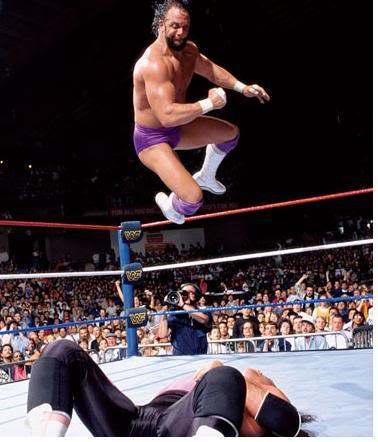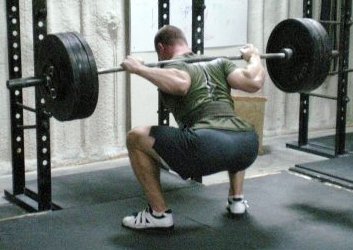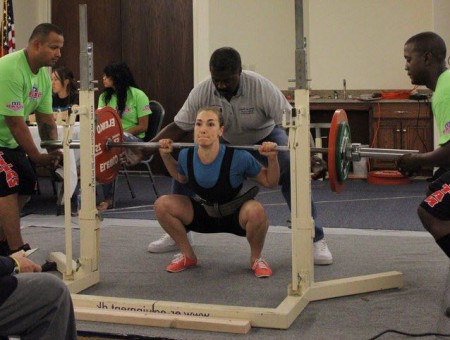It bothers me when people, even the educated ones, say that muscles are “just not firing”, as if there is a total lack of innervation in an otherwise healthy individual (i.e. no radiculopathy or motor unit issues). Sure, muscles can be rendered ineffective because of tightness or bad mechanics — and thus their inclusion in movement is impaired — but they aren’t “not firing”. Subsequently, you don’t “teach muscles to fire” in the absence of the pathology mentioned above. This was my first issue with the article “Your IT Band is Not the Enemy” by Robert Comacho.
There’s so much silly in-fighting in the strength and conditioning world I feel the need to preface this god damn article by saying I’m sure Robert is a nice guy, an effective coach, and I don’t think he’s a piece of shit. I’m just going to disagree with the point of his article and I’m sure he’s man enough to accept that. And if he’s not, then he’ll scream into his pillow.
I’m actually disappointed in this article since it said the foam roller may be the enemy, yet there wasn’t much evidence supporting the statement. There are a lot of things that can result in a tight iliotibial tract, or IT band, because there are quite a few structures that interact with it. The author is right in the roles of the TFL and the gluteus medius in how they attach to the IT band with their inferior (or lower) attachments and help stabilize the knee. The vastus lateralis (the outside quad) also has some IT interaction and can affect function in the area as well. Note that other muscles that don’t actually touch the IT band can exacerbate tightness or pain too. But describing articulations with the IT band is incomplete because movement and mechanics will dictate muscular function and therefore tightness and pain at the IT band.
Bad posture, movement, and lifting mechanics will influence what muscles are used, overused, or ineffectively used (though they will still fire, mind you). This is the stuff that will dictate whether or not muscles like the TFL, glute medius, or vastus lateralis are tight and whether or not the IT band incorrectly receives stress and loading. It leaves the scope of this article to detail a comprehensive look at mechanics that effect the IT band, but some mechanic faults include the navicular drop (collapsed foot arch), knees moving in on any movement including walking, running, squatting, etc., and having tight internal rotators at the hip and weak external rotators (for the IT band’s purposes, I’m referring to the posterior fibers of the glute medius). If none of that made any sense, it just means doing athletic stuff with shitty technique will cause IT band issues and that a coach should be fixing it.
But I want to focus on two ideas:
1. Soft tissue work is being demonized.
2. Readers are so quick to hear someone’s opinion and immediately accept it as gospel, stroke its dong, and revel in its post-coitus warmth.
The Demonization of Soft Tissue Work
Foam rollers increase range of motion and reduce pain. My IT bands are tight and my knees hurt. Therefore I should apply the roller to my IT bands to solve these problems, right? Unfortunately, more often than not the answer to this question is a resounding “no.” It’s quite possible you’re actually doing more harm than help and further stretching an already abused and over-elongated piece of tissue. (From Robert’s article)
Unfortunately, most people do roll on their IT band excessively to try to fix it. Robert is right to criticize this, but he makes it seem like there is no place for it and fails to acknowledge that good coaches will not prescribe this. In his defense, he does clarify that, “It wasn’t my intention to state that foam rolling/stretching have no place in this type of rehab, It was more to point out…that the solution may be a bit more complex. (From a reply of his in the comments).
Fair enough, but then why suggest in the title of the article that the foam roller is potentially the problem? That’s like saying guns are a problem instead of the psycho pieces of shit who wield them against innocent people. It may be Breaking Muscle’s fault (the website that published the article); I know that The CrossFit Journal gave my article a shitty title when they published it. A website or journal needs to sell, and unfortunately people are more likely to click something if it’s controversial or big boobs.
As much as people want to say foam rolling or using lacrosse balls is actually harmful, the practical evidence suggests otherwise. Should we just mash on shit when it hurts? No, sir. But well thought out and executed soft tissue work can not only improve a lot of issues, but they are necessary in the absence of a good physical therapist. If you — whether you’re a trainee or a coach — want to improve your knowledge about this, then get your nose in a book or a college class and learn musculoskeletal anatomy. Learn about biomechanics and how to optimally distribute force efficiently. Learn about trigger point therapy and different types of injuries. I wrote two articles (“Why Anatomy Is Important” and “Learning About Strength and Conditioning“) that include some resources about this material, but I’ve learned most of it by doing and thinking.
This article isn’t a guide on how to do soft tissue, but I want to defiantly stand against the notion that it’s the enemy. Stupid soft tissue work is the enemy, just like the stupid use of Valium and a heavy machinery is the enemy. Coaches and trainees who actually give a shit need to think, which leads me to my next point.
Use Your Fucking Noggin
Below is something I saw on Facebook.
 A few things:
A few things:
1. The post the person linked to is from “I Fucking Love Science”, which is a stupid fucking piece of shit Facebook page that is the epitome of irrelevant material and aims for self popularity instead of the dissemination of knowledge. Read Maddox’s entertaining article about it.
2. I really wanted to be way more of an asshole, but I actually have a pretty thick filter. The point: if there were a giant ligament in every person’s knee, don’t you think somebody would have noticed in the last 2,000 years?
3. People ate this steaming bullshit up and then asked for seconds and thirds. This is a problem.
Readers are so god damn quick to immediately and irrevocably believe whatever they are being told, regardless of the qualifications of the person writing it. It could be written by some goober who has never coached anyone or someone who has many degrees and athletes, but is borderline retarded.
As a consumer about training information, you need to be openly skeptical about everything you read or hear. Hearing something that makes you feel good or that you agree with doesn’t make it 100% true. If the coach who has been watching you squat for two years tells you to do something, they should have the ability and the proverbial balls to explain it to you, even if it’s merely a hunch or experiment.
When a guy like Robert writes an article that says your foam roller is the problem, don’t immediately say, “I FUCKING KNEW IT. THIS PROVES WHAT I’VE THOUGHT ALL ALONG.” Read what the dude is actually saying, question it, and see what info you can use. Discuss it. Think about it.
Foam rollers, rumble rollers, lacrosse balls, and Theracanes are not the enemy; our brains are. Let’s hold them accountable.





